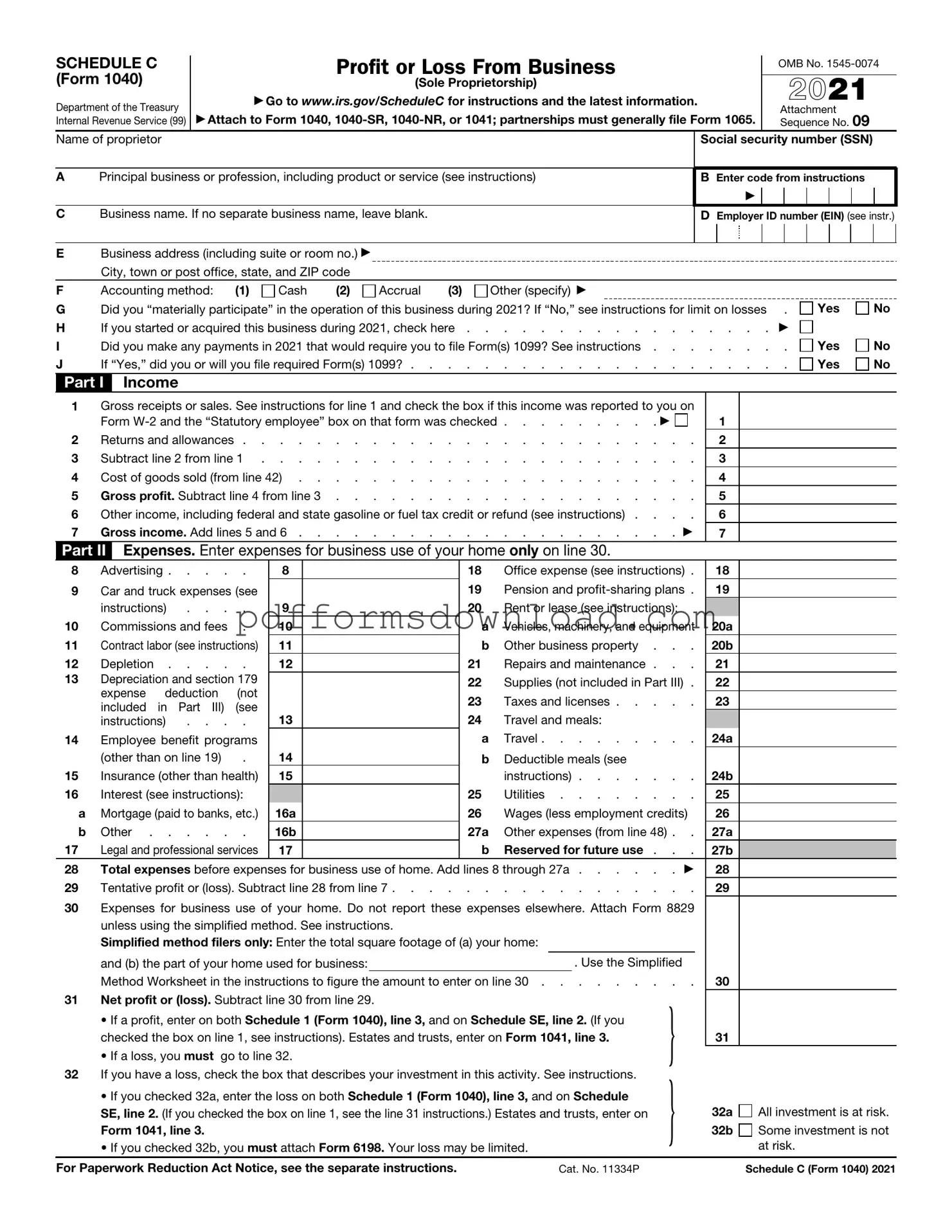What is IRS Schedule C 1040?
IRS Schedule C (Form 1040) is a tax form used by sole proprietors to report income or loss from their business. This form allows individuals to detail their business earnings and expenses, ultimately determining the net profit or loss that will be included in their personal tax return. It is essential for self-employed individuals to accurately complete this form to ensure compliance with tax regulations.
Who needs to file Schedule C?
Any individual who operates a sole proprietorship must file Schedule C. This includes freelancers, independent contractors, and anyone running a small business as a single owner. If you earn income from self-employment or a business, regardless of the amount, filing this form is typically required. However, if your business is structured as a corporation or partnership, you would need to use different forms.
What information is required on Schedule C?
Schedule C requires various pieces of information, including your business name, address, and the type of business you operate. You will need to report your total income, which includes all revenue generated from your business activities. Additionally, you must list all business expenses, such as advertising, supplies, and utilities. These expenses will help reduce your taxable income, so it is crucial to keep detailed records throughout the year.
How do I calculate my net profit or loss on Schedule C?
To calculate your net profit or loss, start by adding up all your business income. Next, total all your business expenses. Subtract the total expenses from your total income. If your income exceeds your expenses, you will have a net profit, which is taxable. Conversely, if your expenses are higher than your income, you will report a net loss, which may allow you to offset other income on your tax return.
When is Schedule C due?
Schedule C is typically due on April 15th, coinciding with the due date for individual income tax returns. If April 15th falls on a weekend or holiday, the deadline may be extended to the next business day. It is important to file on time to avoid penalties and interest. If you need more time, you can file for an extension, but remember that any taxes owed must still be paid by the original due date to avoid additional charges.
